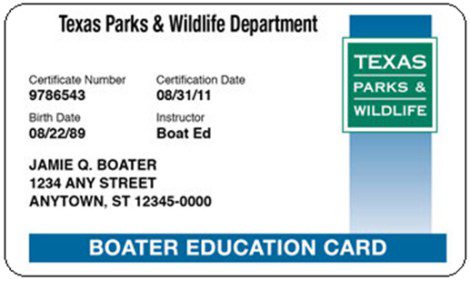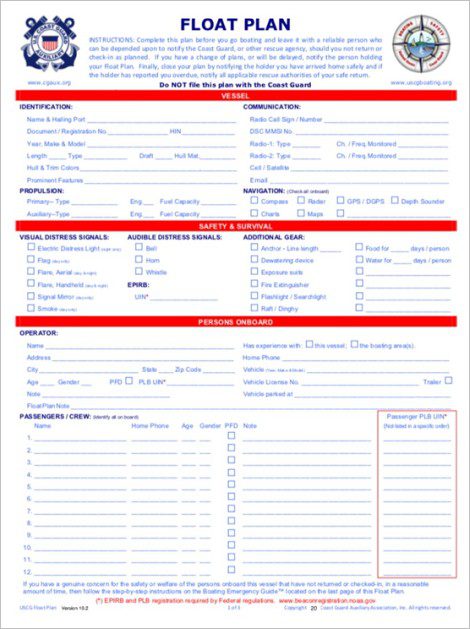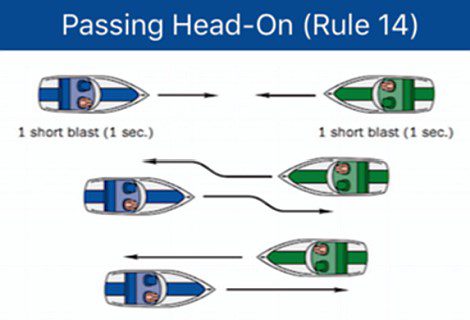 By Bob Currie, Recreational Boating Safety Specialist
By Bob Currie, Recreational Boating Safety Specialist
U. S. Coast Guard Auxiliary Station Galveston Flotilla
This column is about Recreational Boating Safety, and some people may think that the target audience is boat owners. Well, it is, but there is another target audience: the recreational boat passenger. You do not have to be a boat owner to enjoy recreational boating. Being invited to be a passenger can be quite enjoyable in itself, but you can increase that enjoyment by becoming a Recreational Boat Crew Member. Let’s look at how you can move from simple passenger to part of the crew.

Boater Education Course
The most important step you can take to becoming a Recreational Boat Crew Member (RBCM) is to take a Boater Education Course. All members of the Coast Guard are required to take such a course. A course that meets any state boating requirement will do. Boat operators born after August 31, 1993 (except for certain small boats with limited power) are required to take a Boater Education Course. There are Coast Guard Auxiliary flotillas who put on such courses, and you can also take the course online at BoatUS.com.

Choose Your Skipper Wisely
While a three-hour tour on a boat sounds inviting, things can go bad when the weather starts getting rough and the tiny ship you are on is tossed. You need to know that your skipper has experience with his boat, experience in the waters in which he intends to sail, and, if you are a paying passenger, that the skipper and all crew are properly licensed by the U.S. Coast Guard. If you are not a paying passenger, you should at least determine that the skipper is fit and has a well-outfitted boat. One good indication that the boat is properly outfitted with required safety equipment is a current Coasty Guard Vessel Safety Check sticker on the port (left) side of the boat. That means the boat has passed a safety inspection and has the required amount of life jackets, visual distress signals (flares, flags, etc.), navigation lights, horn, and emergency kill switch lanyard, among other requirements.

File a Float Plan
A float plan is a detailed description of the proposed trip, including who will be aboard, where you will launch, when you will launch, where you plan to go, and when you plan to return, among other information. The boat operator should file a float plan with someone who will report them as late if the operator doesn’t report in at the selected time. We recommend that the passengers also file a float plan with a friend or relative. The Coast Guard Auxiliary Float Plan can be found at Float Plan Central – Official site of the Float Plan (cgaux.org).
Dress for the Weather
You should always were a hat, sunglasses, and sunscreen. Flip flops are okay. No they aren’t! Wear some boat shoes. Good fitting tennis shoes will work. You do not want to fall overboard because your feet slipped in your flip flops. This happened recently, dockside, and it resulted in a fatality. At the dock. When it starts cooling down you need to dress for immersion, meaning wear layers of non-cotton clothing.
Hold a Job Briefing
You don’t want to surprise your captain with your newfound knowledge by taking over a job without first having a job briefing. The job briefing should entail where important equipment, such as the anchor, first aid kit, boat lines, marine radio, docking fenders, visual distress signals, and other important equipment are located. You need to relay what knowledge and experience you may have to the captain, and then let him decide which jobs he wishes to assign you, if any. It may take some time before the captain decides to allow you to take on any responsibilities.
Follow the Captain’s Instructions
The best passengers and crew members are those who follow the important instructions given by the captain. This includes sitting where they tell you to sit, and not moving about the boat while it is underway unless instructed to by the captain. Don’t take on any chores without being asked to or without express permission. Moving about the boat, especially in close quarters to other boats or to the dock, can alter the intended course of the boat and could cause an unintended collision.
Take the Helm
The best RBCM is one who knows how to operate and steer the boat. Tell your captain that you would like to know how to operate the boat in case they become incapacitated or end up in the water. One key piece of information to learn is where the spare engine kill switch lanyard is located. This may take your captain by surprise, as most people don’t realize that if they end up in the water with the engine kill switch attached to them, then anyone left aboard will have no way to start and operate the boat in order to rescue the captain in the water. Skills to practice including starting from a standstill and bringing the boat up on plane, holding a course toward a certain object such as a navigation buoy, making a turn to port (left) and a turn to starboard (right), and stopping the boat, all operations to be done smoothly and without jostling the passengers. Also learn how to operate in reverse.
Be a Lookout
Rule 5 of the Rules of the Road says that the captain must designate someone to watch for dangers that may come from any direction: “Every vessel shall at all times maintain a proper look-out by sight and hearing as well as by all available means appropriate in the prevailing circumstances and conditions as to make a full appraisal of the situation and of the risk of collision.” Ask the captain if they would like you to serve as a look-out. They would most likely appreciate that type of help, especially in a crowded bay where boats are going hither and yon in any direction and at inappropriate speeds. Notify the captain when you spot a vessel which could be on a collision course with your boat, indicating from which side and direction the boat is approaching. Also notify the captain of objects in the water that could make contact with your boat if the course were not altered to avoid it.
Wear a Life Jacket at All Times
The person who drowned at the dock recently when they fell overboard was not wearing a life jacket. Many people like to say always wear a life jacket when underway, but that is not enough. I can think of five incidents in the last couple of years in which a person drowned when they fell off a stationary boat. Some people are afraid they look silly in a life jacket, but in reality they only look silly if they aren’t wearing one. In a majority of drowning cases where people fell overboard from a stationary boat, the victim hit their head on something going over and was knocked unconscious. Such is the case with the Keemah police chief who fell overboard while anchored. It is much easier to become knocked unconscious than you would think. Poor Mannix and Rockford got knocked out every single episode. You could always see it coming on TV, but it sneaks up on you on a boat. Wear a life jacket that is intended to hold your head above water.
Stay Hydrated
A great many calls for help on the water are due to persons on board becoming seriously ill due to dehydration. Drink plenty of water during the trip. Don’t wait until you feel thirsty. The water surface acts like a giant magnifying glass and effectively doubles your exposure to direct sunlight by reflecting it from the water’s surface. You get those rays coming and going. A minor heat-related discomfort can quickly become a serious illness such as heat exhaustion or even life-threatening heat stroke. Yes, we can come to your rescue in a fast helicopter, but once you reach the stage of heat stroke your life expectancy can be measured in minutes rather than hours. Beer does not hydrate.

Learn Line Handling
The trickiest part of flying a plane is taking off and landing. Anyone can steer. It’s the same with a boat. On a plane the copilot has chores such as lowering the landing gear and setting the flaps. On a boat it helps to have a crew member who can handle docking fenders and lines when leaving or approaching the dock. Learn the basic knots used by mariners, especially those used for securing a boat to a dock. Learn how to use a walking fender to keep the dock from chewing up the rub rail on the boat. Someone who can help with line handling at the dock is a valuable person to have aboard.

Learn the Navigation Rules
Being a contributing member of the crew is more enjoyable than just sitting there and watching the action. Knowledge is the key to enjoying a trip on the water. The more you know the more you can appreciate what is going on. Learn the navigation rules, also known as the Rules of the Road, also known as the COLREGS (Regulations for Preventing Collisions at Sea). You are a much more valuable passenger if you can point out to the captain that the boat ahead is flying the “Restricted in Ability to Maneuver” day shape. Learn the Responsibilities Between Vessels (Rule 18, also known as the pecking order). Learn the Actions to Avoid a Collision (Rule 8). Learn the Overtaking Rule (Rule 13) and the Passing Head-On Rule (Rule 14). Learn the different buoys and dayboard meanings.
Summary
You do not have to own a boat to be a mariner. You can gain knowledge and experience as a passenger that makes you much more knowledgeable than the average recreational boater, and you can become a mariner in your own right. By becoming a Recreational Boat Crew Member you will increase your enjoyment of the water as well as increase your own safety on the water.
[BC: Oct-3-2023]

 Posted in
Posted in 























